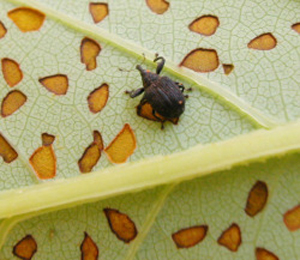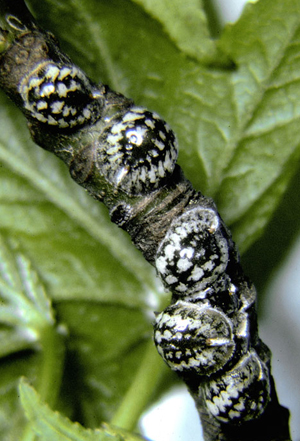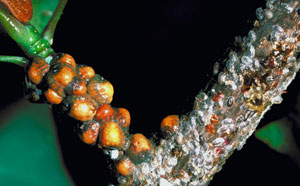Leaf Feeders

Lee Townsend, University of Kentucky Entomology
Sap Feeders

John A. Weidhass, Virginia Polytechnic Institute and State University, Bugwood.org
Some plants are very sensitive to feeding by certain aphid species. Saliva injected into plants by these aphids may cause leaves to pucker or to become severely distorted, even if only a few aphids are present. Also, aphid feeding on flower buds and fruit can cause malformed flowers or fruit.
Aphids produce large amounts of a sugary liquid waste called "honeydew". The honeydew that drops from these insects can spot the windows and finish of cars parked under infested trees. A fungus called sooty mold can grow on honeydew deposits that accumulate on leaves and branches, turning them black. The appearance of sooty mold on plants may be the first time that an aphid infestation is noticed. The drops can attract other insects such as ants, flies, and wasps that will feed on the sticky deposits. For more information, see Entfact 103.

Raymond Gill, California Department of Food and Agriculture, Bugwood.org

Gerald J. Lenhard, Louisiana State University, Bugwood.org
There is one generation of the tuliptree scale each year. They spend the winter in an immature stage with females maturing during late summer and laying eggs that hatch in August. For more information, see Entfact 435.